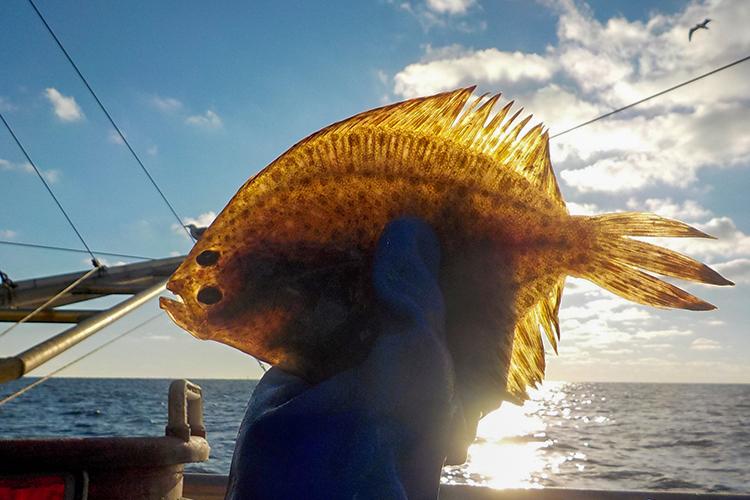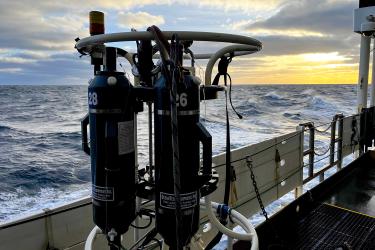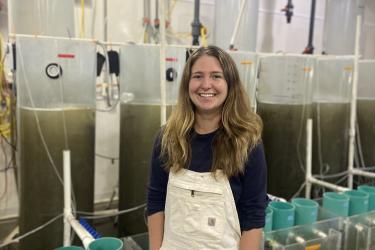Have you ever started your commute the day before your workday? For fishermen, and people like me who have jobs that revolve around the fishing industry, it happens more often than you might think.
There’s a lot of variability in my job as a groundfish at-sea monitor. I go on commercial fishing trips departing anywhere from Maine to Rhode Island, day or night. My most recent trip left from Point Judith, Rhode Island—you may know about this town from the Block Island Ferry. This particular trip was on a bottom trawl vessel targeting skates. This vessel was scheduled to leave the dock at 2 a.m. To meet it, I had to leave my house at 11:30 p.m. the night before.
This was my third trip on this vessel, so I was already familiar with the captain and crew and how they typically work. It took us a few hours to reach the fishing grounds. This gave the crew and me a chance to catch a bit more sleep in the bunks below deck. The crew set the first tow just before dawn—before most people start their daily work commute.
Bottom trawl vessels tow a large net across the seafloor behind the vessel. At the end of a tow, the fishermen bring the net aboard the vessel and empty it onto the deck. Then the crew sorts what they want to keep from what they want to leave behind. Anything they leave behind is considered a “discard.” As an at-sea monitor, that’s where I come in.
The most important data I collect is the amount by weight of each species brought on board with each haul. When I'm working on deck, most of my focus is on the discards. Using digital or handheld scales, I record the weight of each species and why it’s being discarded. One reason a fish is discarded is because it doesn’t have any market value. This category includes sea stars, sea robins, and striped burrfish. A fish may also be discarded because it isn’t within legal size range.
Once I’ve got all of the information I need, the discards go right back into water. Fishermen put the kept catch on ice in the fish hold or in containers on deck. Then they clear off the deck, and the whole process starts over again.
Later, my data will be combined with the fishermen’s records of what they’ve sold to create a profile of their entire catch. Scientists and regulatory agencies then use that profile to keep track of the health of different fisheries, and make decisions on how to manage them.
While catching a break below deck between hauls, I started hearing high-pitched whistles and clicks coming through the hull. A pod of common dolphins had caught up with us! It’s not unusual for large predators like dolphins or tuna to pick up on the fact that easy meals are sometimes dumped overboard by fishing vessels. The dolphins stayed with us overnight and into the second day of our trip, surfing the wake beside the bow and snacking on the fish we tossed overboard.
The second morning dawned bright and blue as we headed back to Point Judith. It was about as perfect a day as you could hope for out on the water and not bad a commute home.







